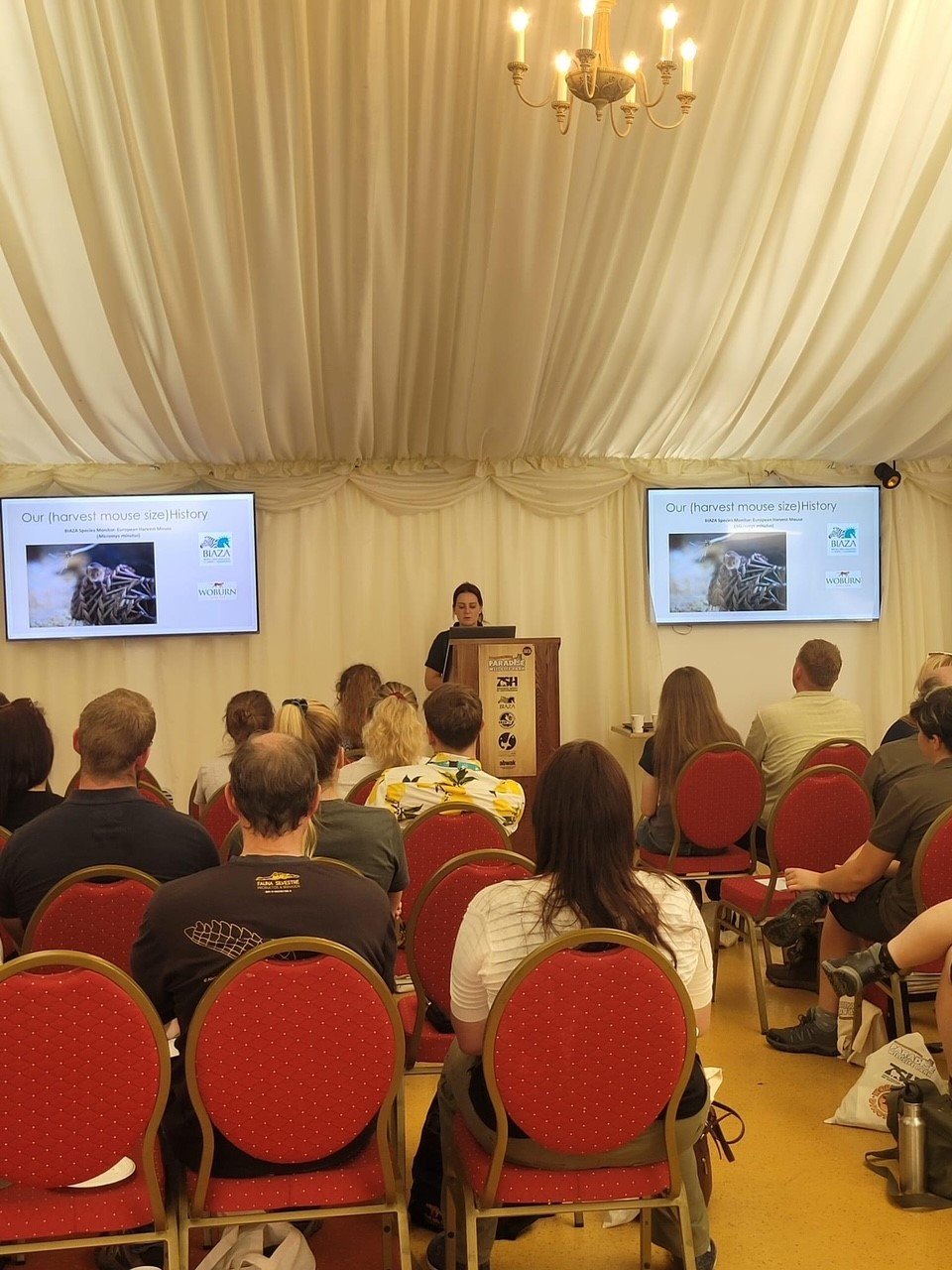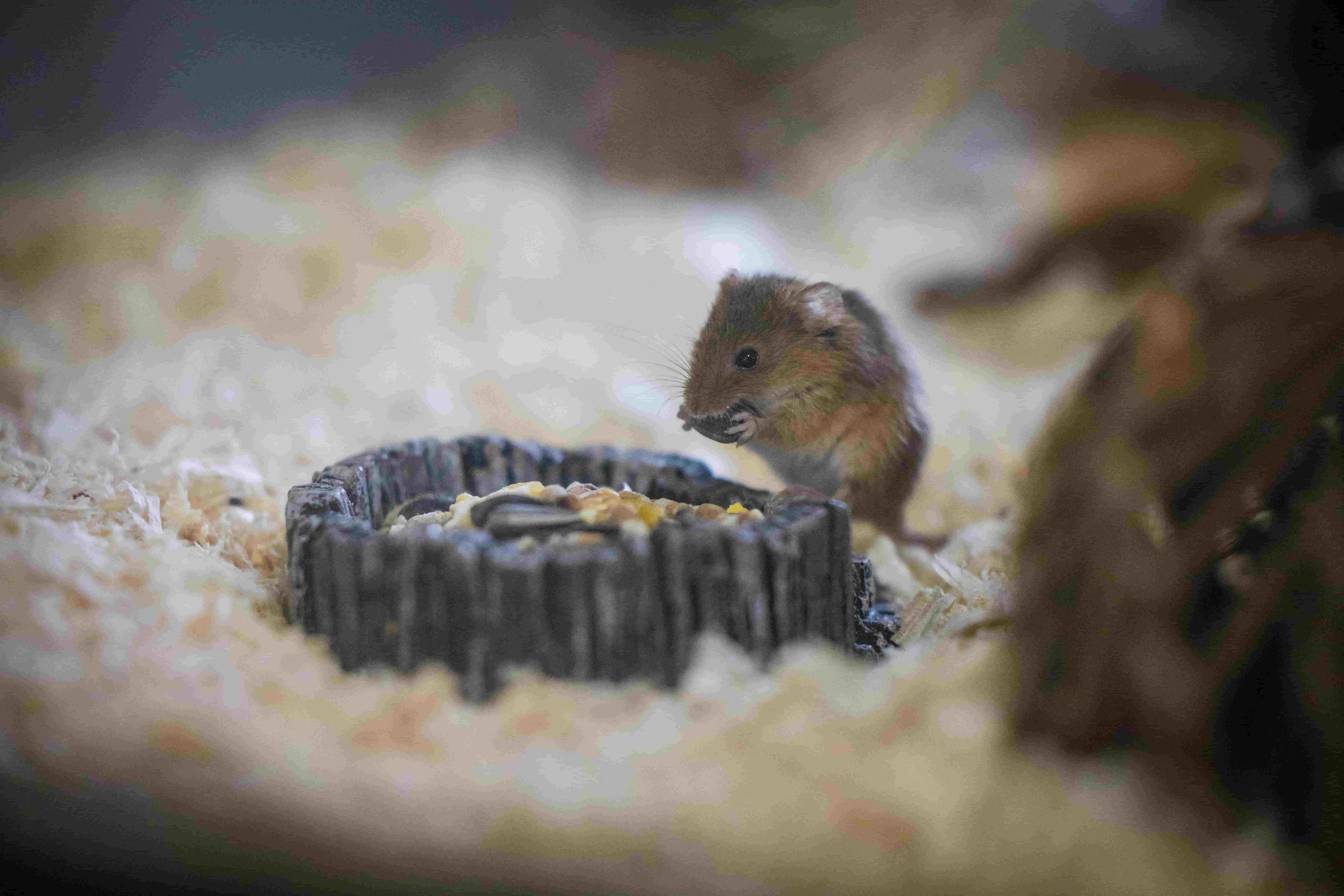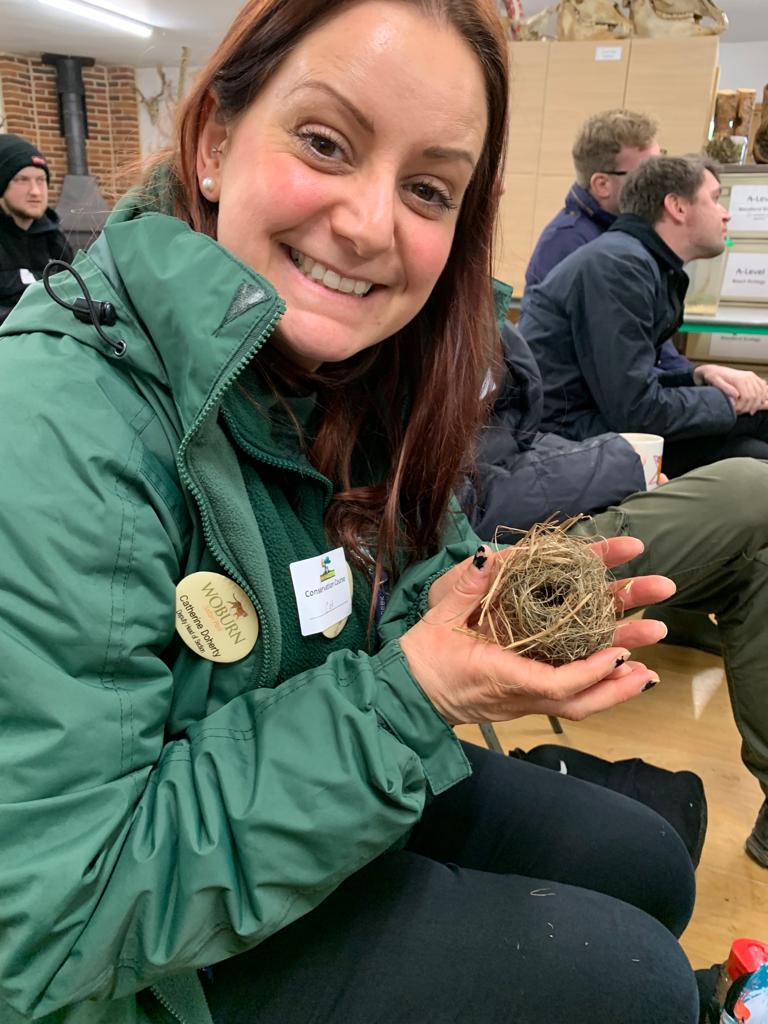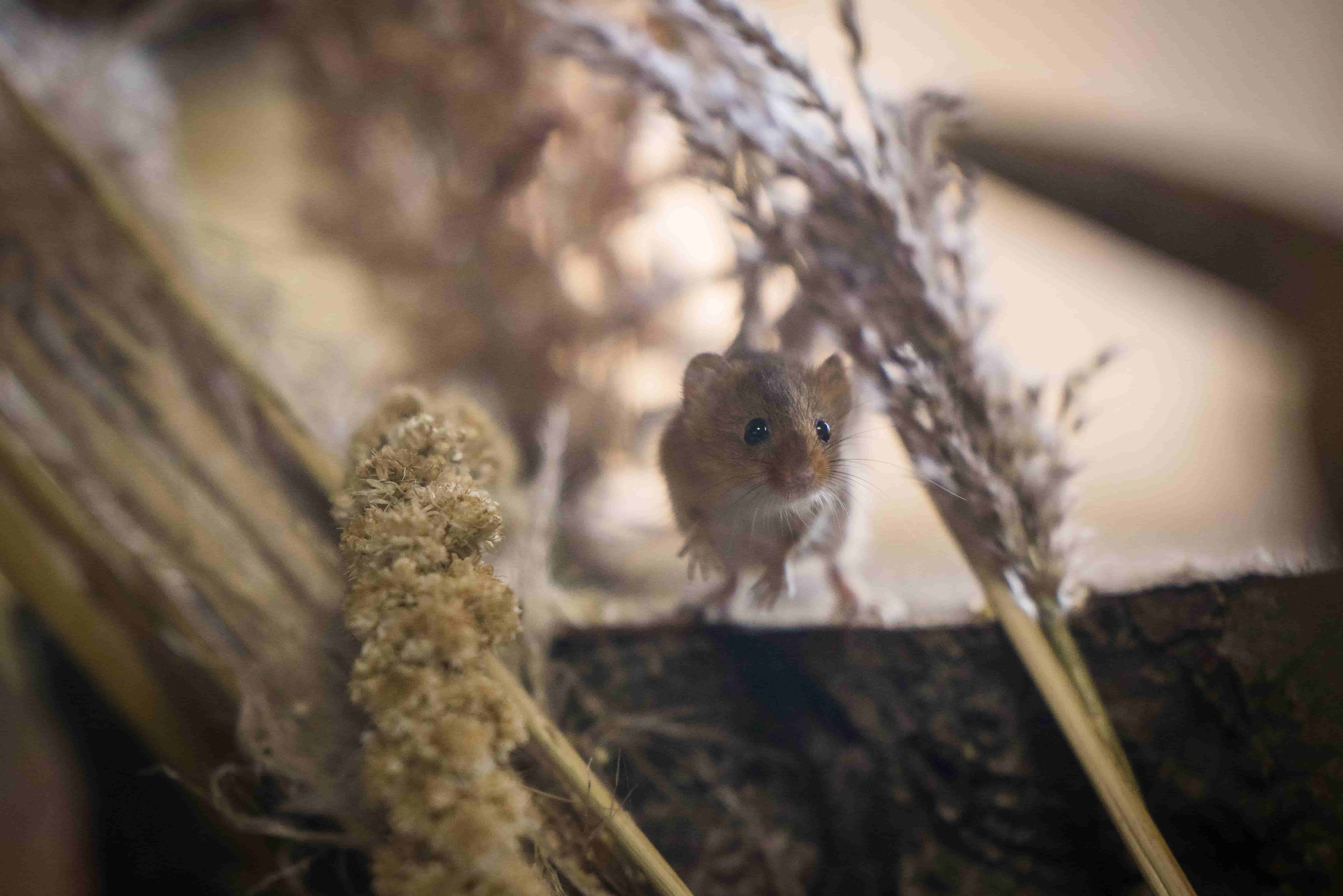Our very own Head of Animal Encounters, Catherine Doherty spoke at The Native Species Working Group Conference at Paradise Wildlife Park last month, speaking all about her amazing work with the BIAZA Harvest Mouse Focus Group (HMFG), launch the brand new BIAZA Eurasian Harvest Mouse care sheet and present her findings as BIAZA Species monitor for Eurasian Harvest mice.

Harvest mice are tiny native creatures, primarily found from central Yorkshire down to the coast of southern England. They are an iconic feature of the British countryside because of their love of long tussocky grasslands, hedgerows and farmland, but they can also be spotted in reedbeds and around woodland edges. They are the only British mammal to have a prehensile tail, making them incredibly acrobatic.

'The aim of the Harvest mice focus group and the BIAZA species monitor is to get a handle on the numbers of European harvest mice in BIAZA UK collections, at a point where lots of collections new to Harvest mice are taking them on and some are looking at release projects', explained Head Keeper Cat in her presentation.
This vital work is crucial to preserving this amazing species - as habitat loss continues to fragment harvest mice populations across the UK and beyond.

The Eurasian harvest mouse is found across much of Europe and also parts of Asia including China, Japan and India. It is a UK BAP (Biodiversity Action Plan) priority species having thought to have undergone rapid decline nationwide.
Although distribution is widespread across England it is incredibly patchy due to fragmentation of populations. In neighbouring Scotland and Wales they are listed as Critically Endangered and Vulnerable respectively - with isolated records from Scotland and Wales likely being the result from the release of captive animals - and they are not found in Northern Ireland or the Republic of Ireland. The Mammal Society IUCN-authorised Red List of British Mammals stating they are Near Threatened in Great Britain as a whole.

Some experts suggest that fragmentation is caused in some areas by changes in agricultural practices and land use, but hard winters and wet weather brought about by the changing climate has also impacted populations in certain geographic regions. They are also under threat from competition and predation from other rodents and mammals, as well as birds of prey – the success of some owl conservation projects is thought to have also depleted harvest mice numbers, with them being the preferred prey of barn owls.
The group of harvest mice here at Woburn live in an enclosure in the Foot Safari, just in front of the bush dogs in Cachorro Range.
They can often be seen scurrying back and forth amongst the leaves and tall grasses that mimic the features of their natural rural habitat. They also love to explore using their long prehensile tail to help them climb and maintain their balance whilst running and jumping around the various logs and ropes.